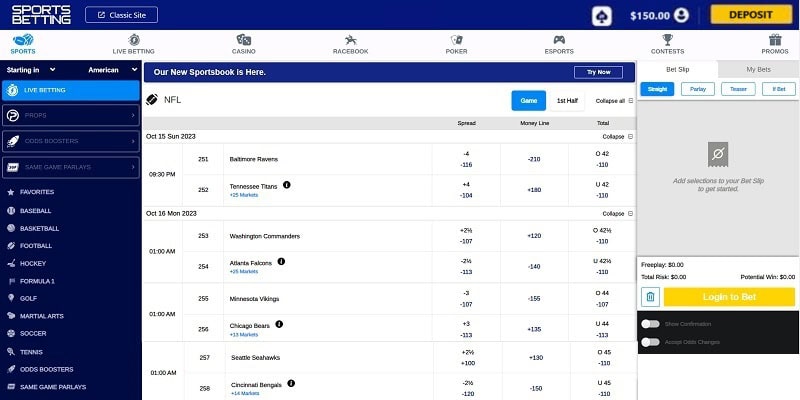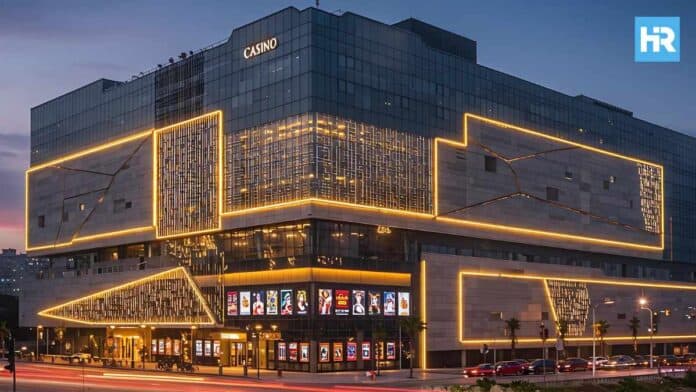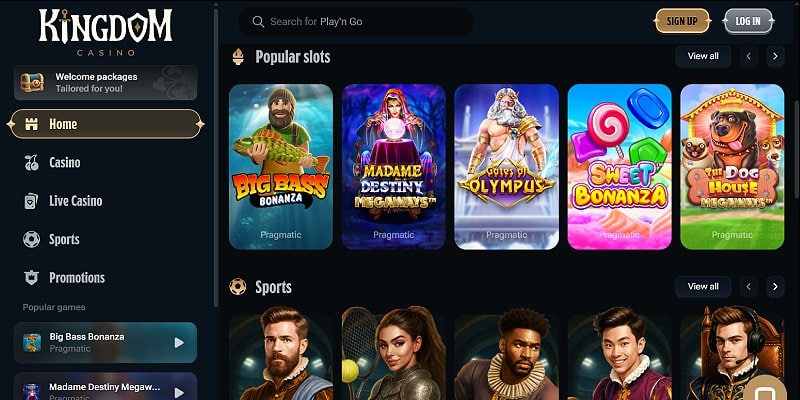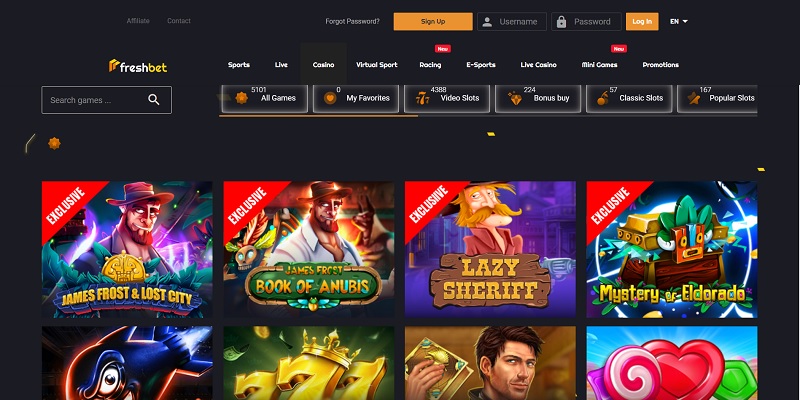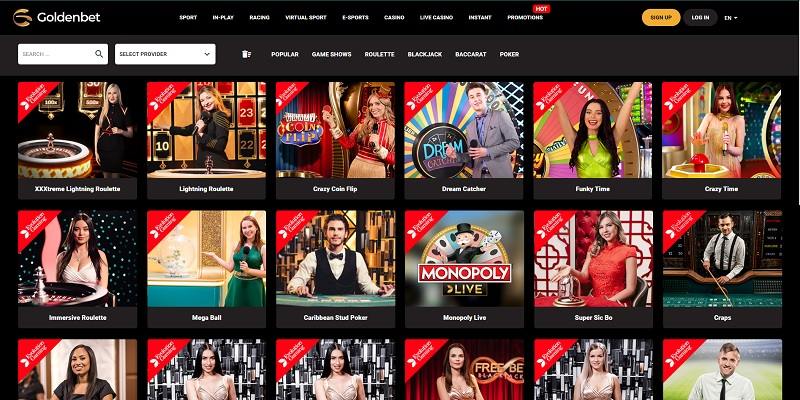Maryland has fully embraced online and retail sports betting, making it one of the more progressive states in the U.S. when it comes to legal wagering.
After voters approved a referendum in 2020, lawmakers finalized regulations, leading to the official launch of legal sports betting at retail locations in 2021 and online betting in 2022.
Since then, the industry has expanded quickly, with major platforms offering a range of betting options. Sports betting has already generated millions in tax revenue, benefiting public programs across the state.
Here’s what you need to know about legal sports betting in Maryland.
Is Online Gambling Legal in Maryland?
Maryland offers an impressive sports betting market, with both online and retail sportsbooks operating under state regulation. Residents can legally place wagers in a safe and regulated betting environment through licensed operators.
While sports betting is fully legal, other forms of online gambling remain prohibited. Online casinos and poker sites are not authorized, meaning players must visit physical casinos for traditional table games and slot machines. However, daily fantasy sports (DFS) platforms operate legally, providing an alternative way to engage in online gaming.
Below is a quick overview of Maryland’s online gambling laws:
| Gambling Type | Legal Status |
| Online Sports Betting | Legal |
| Retail Sports Betting | Legal |
| Daily Fantasy Sports (DFS) | Legal |
| Online Casinos | Illegal |
| Online Poker | Illegal |
Sports You Can Bet on in Maryland – Quick Look
Maryland’s legal sports betting market offers various betting options across major professional and college sports. Residents can place wagers through online sportsbooks and retail locations, choosing from various bet types, including moneylines, point spreads, parlays, player props, and live in-game betting.
- Professional Sports: NFL, NBA, MLB, NHL, MLS, and more.
- College Sports: Betting on NCAA games, including wagers on in-state teams like the Maryland Terrapins, is allowed.
- Combat Sports: UFC, boxing, and other mixed martial arts events.
- Racing: Horse racing is legal in Maryland, with betting available at racetracks and online platforms.
- Golf & Tennis: Major tournaments like The Masters, Wimbledon, and the U.S. Open are available for betting.
- Esports: Select sportsbooks offer wagers on competitive gaming events.
Additionally, Maryland sports bettors can enjoy same-game parlays, futures bets, and prop bets on individual player performances. With a growing sports betting industry, new wagering opportunities may continue to emerge in the state.
The History of Online Sports Betting Laws in Maryland
Key legislative milestones and voter decisions have shaped Maryland’s path to legal sports betting. While the state had long allowed horse racing and retail casino gambling, sports betting remained off-limits until a major shift in federal law opened the door for state regulation.
2018 – PASPA Repeal and the First Steps Toward Legalization
In 2018, the U.S. Supreme Court struck down the Professional and Amateur Sports Protection Act (PASPA), allowing individual states to legalize sports betting. While some states acted quickly, Maryland took a more cautious approach, requiring voter approval before moving forward.
2020 – Voter Referendum Approves Sports Betting
In November 2020, Maryland voters overwhelmingly approved Question 2, a ballot measure legalizing sports betting. This allowed lawmakers to craft regulations for both retail and online sportsbooks, paving the way for a fully regulated market.
2021-2022 – Sports Betting Goes Live
Maryland passed House Bill 940 in 2021 following the referendum, outlining licensing structures and regulatory guidelines. Retail sportsbooks launched in December 2021, with major casinos like MGM National Harbor and Live! Casino & Hotel opening in-person betting lounges. Online sports betting followed in November 2022.
2023-Present – Market Growth and Expansion
Since its launch, Maryland’s sports betting industry has grown rapidly, generating millions in tax revenue for education and public programs. Lawmakers continue to refine regulations, and discussions around potential expansion into other forms of online gambling, like online casinos, remain ongoing.
How the MD Sports Betting Market Compares To Neighboring States
Maryland’s sports betting market has experienced significant growth, particularly since the launch of online betting in November 2022. In November 2024, the state reported a record handle of approximately $639.9 million, surpassing the previous month’s record of $593.1 million. This surge contributed nearly $12 million to state coffers, marking a substantial increase from prior months.
When compared to neighboring states, sports betting in Maryland has shown promising potential, driven by a growing number of participants and robust revenue figures.
- Pennsylvania: In 2024, Pennsylvania’s gaming industry achieved a record high, with combined revenues surpassing $6.1 billion – a 7.73% increase from the previous year.
- New Jersey: New Jersey’s internet gambling market reached a record of $213.6 million in October 2024, surpassing September’s previous high of $208 million.
While Maryland’s market is still maturing, its rapid growth indicates a strong regional competitive stance.
Key Players Shaping Maryland’s Online Gambling Legislation
A diverse group of stakeholders influences the trajectory of online gambling and sports betting legislation in Maryland, each playing an important role in the state’s regulatory landscape.
Legislators: State Senator Ron Watson has advocated for expanding online gambling. In 2023, he introduced legislation proposing a statewide referendum to legalize online gaming, aiming to establish a comprehensive framework for regulation and taxation.
Sports Betting Companies: Major players are actively involved in shaping the online gambling landscape. For example, they have advocated for broader market access, pushing back against proposals that limit online gaming licenses exclusively to land-based casinos.
Advocacy Groups: Organizations focusing on responsible gambling and economic development also influence the discourse. They emphasize the importance of consumer protection measures and the potential economic benefits of a regulated online gambling market.
Maryland Sportsbook Bonuses
One of the biggest draws of online sports betting in Maryland is the wide range of bonuses offered by top sportsbooks. These promotions can boost your bankroll and improve your experience. Here’s a breakdown of the most common sportsbook bonuses available in Maryland:
Welcome Bonus: New users can take advantage of welcome bonuses, which typically come in the form of a deposit match, bonus bets, or a risk-free first bet. These offers provide an excellent starting boost, allowing bettors to place additional wagers without extra risk.
Deposit Match Bonus: A deposit match bonus rewards players by matching a percentage of their initial deposit. For example, a sportsbook may offer a 100% match up to $500, effectively doubling a bettor’s starting balance.
No-Deposit Bonus: Some Maryland sportsbooks provide no-deposit bonuses, which grant players a small amount of bonus funds just for signing up – no deposit required. This type of promotion allows new users to place wagers without risking their own money.
Odds Boosts: Many Maryland sportsbooks offer daily odds boosts, increasing potential payouts on select bets. These promotions are a great way for bettors to maximize returns, especially on high-profile games or parlay bets.
Maryland Sports To Bet On
Maryland’s thriving sports culture gives bettors plenty of options, from professional leagues to powerhouse college programs. Below are the most popular sports you can wager on in the Old Line State.
Football
Few things rival the passion Marylanders have for football. The Baltimore Ravens take center stage in the state, and Maryland sportsbooks offer a variety of ways to wager on every snap, drive, and touchdown.
You can also bet on the Washington Commanders, who play their home games just outside of D.C. in Landover, Maryland. NFL betting typically includes moneylines, spreads, totals, and a variety of props for each matchup. Live betting (or in-game wagering) also keeps you engaged from kickoff to the final whistle.
Basketball
Maryland basketball fans often look to the Washington Wizards, who compete in the NBA’s Eastern Conference. While the team is based in D.C., plenty of Marylanders support the Wiz by placing wagers through online Maryland sports betting sites, which provide convenient ways to bet anytime, anywhere in the state.
Popular NBA wagers include point spreads, over/unders, player props (like total points or rebounds), and creative parlays. During the playoffs, you’ll find enhanced odds and special promos across many Maryland sportsbooks.
Baseball
Baseball season in Maryland belongs to the Baltimore Orioles. Playing at the iconic Camden Yards, the Orioles boast a storied franchise history – one that avid fans can follow closely by using Maryland online sportsbooks, which offer numerous MLB betting markets and real-time odds.
MLB betting offers multiple ways to get in on the action, such as first-inning scoring bets, run lines, and live odds that shift with every pitch. Whether you’re banking on a home run prop or a classic moneyline wager, baseball provides countless opportunities to swing for the fences.
Hockey
Though Maryland doesn’t have an NHL team, plenty of locals rally behind the Washington Capitals. The Caps have built a strong following, and legal Maryland sports betting makes it easier than ever for fans to back their favorite team with puck line wagers, goal totals, and more.
NHL bets include puck lines (hockey’s version of the spread), game totals, and period-specific wagers. With fast-paced action, live betting can be especially thrilling—perfect for those who like to react in real time to every shift on the ice.
College Sports
College sports hold a special place in the hearts of many Maryland residents, and you can bet on NCAA action – including in-state teams – without any special restrictions. The University of Maryland Terrapins draws significant attention in both football and basketball, competing in the Big Ten Conference.
Many sportsbooks offer comprehensive NCAA betting markets, featuring point spreads, totals, and even futures on conference championships and national titles. Keep in mind that prop betting on individual college athletes varies by sportsbook, so check the rules before placing your wager.
Responsible Gambling
With the rapid growth of legal online sports betting in Maryland, responsible gambling remains a top priority. State regulators and licensed operators aim to ensure that players have access to tools and resources that promote healthy wagering habits.
While sports betting can be an exciting and entertaining activity, it also carries risks such as financial losses, gambling addiction, and impulsive behavior. It’s crucial for bettors to set limits on spending, track their wagers, and recognize signs of problem gambling.
Maryland provides several resources for those who need help:
- Maryland Center of Excellence on Problem Gambling – Offers free counseling and support (helpmygamblingproblem.org).
- National Problem Gambling Helpline – Call 1-800-GAMBLER for confidential 24/7 assistance.
- Self-Exclusion Program – Maryland Lottery and Gaming allows individuals to ban themselves from gambling voluntarily (mdgaming.com).
What’s Next for Sports Betting in Maryland?
Maryland’s sports betting industry continues to grow, generating millions in revenue while offering residents a safe and regulated betting experience. As the market matures, sports betting sites could see even broader integration across the state, especially if lawmakers explore further expansion of gambling laws.
The idea of legalizing online casinos has gained momentum, with supporters emphasizing its potential to increase state revenue and provide a safer alternative to unregulated gambling sites. While no legislation has been passed yet, the success of online sports betting could pave the way for future changes.
For now, Maryland is a strong sports betting market, but adding online casino gambling and online poker could be the next big step in the state’s gambling industry.
Online sportsbooks offer a wide range of sports to bet on. Whether you’re into football, basketball, soccer, baseball, or even more niche sports, you’ll likely find betting opportunities for your favorite games at the best Maryland sports betting sites.
The best online bookie in The Old Line State, MyBookie, offers thousands of betting lines daily and a nice welcome bonus of up to $1,000.
But it doesn’t end there. Want to learn more about sports betting in Maryland? Stay tuned.
Best Maryland Sports Betting Sites
| MyBookie | Best overall – $1,000 sign-up offer |
| BetOnline | Best crypto sportsbook |
| BetWhale | Top pick for live betting |
| BUSR | Up to $2,500 welcome bonus |
| Sportsbetting.ag | Thousands of daily markets |
When you finish reading this guide, you should know exactly which online sports wagering platform best suits you. Signing up for an account can then take minutes. Let’s start!
Is Online Gambling Legal in Maryland?
Maryland offers an impressive sports betting market, with both online and retail sportsbooks operating under state regulation. Residents can place wagers in a safe environment through operators like MyBookie, BetOnline, BetWhale, BUSR, Sportsbetting.ag.
While sports betting is fully legal, other forms of online gambling remain prohibited. Online casinos and poker sites are not authorized, meaning players must visit physical casinos for traditional table games and slot machines. However, daily fantasy sports (DFS) platforms operate legally, providing an alternative way to engage in online gaming.
Below is a quick overview of Maryland’s online gambling laws:
| Gambling Type | Legal Status |
| Online Sports Betting | Legal |
| Retail Sports Betting | Legal |
| Daily Fantasy Sports (DFS) | Legal |
| Online Casinos | Illegal |
| Online Poker | Illegal |
1. MyBookie – Best Maryland Sports Betting Site Overall
Pros:
- Great range of prop betting options
- Stunning racebook
- $1,000 max welcome bonus
- Easy-to-use live betting platform
- Great mobile betting platform
Cons:
- Withdrawal fee in place for certain payment options
- Dark site theme might not appeal to everyone
MyBookie has been serving Maryland bettors since 2014 and is one of the best Maryland online casinos and sports betting sites.
Here, thousands of different events will typically be available for you to bet on every day. The depth of betting markets per event is also highly impressive. You can tweak your betting strategy depending on the situation. Live betting, in particular, is a seamless experience.
If you create a new account at this Maryland sports betting site, you will have a 50% first deposit bonus worth up to $1,000 waiting for you. Besides the welcome package, you can opt for money-back deals, risk-free bets, enhanced odds, reload bonuses, and more.
In addition to this, users of the best Maryland sports betting site can choose from a wide variety of payment options, including Bitcoin, bank transfers, e-wallets, and credit/debit cards. Fast withdrawal speeds are the cherry on top.
2. BetOnline – Top Maryland Sports Betting Online Site for Crypto Users
Pros:
- Many interesting betting features
- Choice of platform designs
- Up to $250 free bet bonus
- Over 16 cryptos supported
- 1000+ daily betting markets
Cons:
- Fees for credit card transactions
- Doesn’t accept e-wallets
BetOnline has been a mainstay for many years in the legal sports betting space.
Not many MD sportsbooks will have as great a range of betting features as what you get with BetOnline. One of our favorite aspects is that odds boosts are available almost daily. The racebook tends to be quite good, too.
New users can claim up to $250 in free bets on their first deposit of $50 or more using the bonus code FREE250 – no wagering requirements apply!
This sports betting Maryland site regularly runs sports contests that carry massive cash prizes. You must pay to enter and submit your predictions for the sports events. Then, you will be ranked on a leaderboard. Prizes are handed out to the best finishers.
Fun Fact: BetOnline is also one of the top betting apps in Georgia.
Those who prefer more modern payment methods will find BetOnline one of the best Maryland sports betting sites for crypto. With over a dozen options, you can transact not only with BTC or ETH but with lesser-known altcoins, too.
Enjoy up to $250 free bet bonus
3. BetWhale – Best Site for Live Online Sports Betting in Maryland
Pros:
- Excellent live betting page
- $6,000 welcome bonus
- Great mobile sports betting site
- Easy verification & fast payouts
- Thousands of daily markets
Cons:
- Could use more reload offers
- Homepage is a bit cluttered
BetWhale is another excellent site for betting in Maryland. And the great thing is that it’s also among the most popular Texas sportsbooks. However, its live betting section stands out the most.
The site offers extensive sports coverage – you can find everything from famous sports like football and basketball to lesser-known options like handball, volleyball, table tennis, and many others.
This online sportsbook is also popular for its same-game parlays. You have a special feature that allows you to see all of the different options in this regard that you can use if you are betting on a Baltimore Ravens or Washington Capitals game.
Our favorite thing, however, is the excellent live betting section – it features high-quality live streams directly from Twitch.
All new players at this Maryland sports betting site get a generous 200% welcome bonus of up to $6,000.
BetWhale supports various banking options, including Visa, MasterCard, American Express, and PayPal, as well as various cryptos like Bitcoin, Litecoin, Ethereum, and many others.
4. BUSR – Best Bonuses of All Maryland Sports Betting Sites
Pros:
- Great user experience
- Stunning collection of betting options
- Up to $2,500 welcome bonus
- Regular rewards on offer
- Fast withdrawal times
Cons:
- $100 minimum deposit for welcome bonus
- Outdated website design
BUSR (Bet US Racing) has been a very popular destination for Maryland sports bettors over the years. The site focuses on college and professional US sports. It also covers dozens of other events, so there should be something for everyone – from tennis betting to custom props.
One of the standout features is the Props Builder tool. This is an in-depth part of the platform that allows you to play even the most obscure prop bets on popular games that are taking place.
New signups have a choice of welcome offers at BUSR, with different deals available for the sportsbook, racebook, and online casino. You can get a whopping 150% first deposit bonus of up to $2,500 for the regular sportsbook when you use the appropriate bonus code.
Maryland bettors will also have access to various regular promotions, including reload bonuses and referral bonuses. Horse racing fans will also have access to daily rebates and other interesting offers.
5. Sportsbetting.ag – Best Market Variety of all Maryland Betting Sites
Pros:
- Many great betting contests
- $250 welcome bonus + 100 FS
- Quality platform design
- Thousands of online sports betting markets
- Mobile-friendly sportsbook
Cons:
- Withdrawal speeds aren’t too fast
- Fees on bank withdrawals
Sportsbetting.ag has existed since the very beginning of the online gambling space, so it certainly has stood the test of time.
A solid range of sports can be bet on through this MD online sportsbook, with live betting being a big part of the platform’s main features. Many different bet types are available, and the live betting odds are updated instantly.
Just like BetOnline, Sportsbetting.ag also offers $250 in free bets plus 100 free spins for casino games. To activate this offer, you have to use the code WELCOME.
Fun fact: Sportsbetting.ag is also one of the best Washington betting sites online.
Like many Maryland online sports betting sites, Sportsbetting mainly caters to cryptocurrency, debit card, or credit card transactions. You can use a bank wire to withdraw, but fees can be charged.
History of Online Sports Betting Laws in Maryland
Key legislative milestones and voter decisions have shaped Maryland’s path to legal sports betting. While the state had long allowed horse racing and retail casino gambling, sports betting remained off-limits until a major shift in federal law opened the door for state regulation.
2018 – PASPA Repeal and the First Steps Toward Legalization
In 2018, the U.S. Supreme Court struck down the Professional and Amateur Sports Protection Act (PASPA), allowing individual states to legalize sports betting. While some states acted quickly, Maryland took a more cautious approach, requiring voter approval before moving forward.
2020 – Voter Referendum Approves Sports Betting
In November 2020, Maryland voters overwhelmingly approved Question 2, a ballot measure legalizing sports betting. This allowed lawmakers to craft regulations for both retail and online sportsbooks, paving the way for a fully regulated MD sports betting market.
2021-2022 – Sports Betting Goes Live
Maryland passed House Bill 940 in 2021 following the referendum, outlining licensing structures and regulatory guidelines. Retail sportsbooks launched in December 2021, with major casinos like MGM National Harbor and Live! Casino & Hotel opening in-person betting lounges. Online sports betting followed in November 2022.
2023-Present – Market Growth and Expansion
Since its launch, Maryland’s sports betting industry has grown rapidly, generating millions in tax revenue for education and public programs. Lawmakers continue to refine regulations, and discussions around potential expansion into other forms of online gambling, like online casinos, remain ongoing.
Best Maryland Online Sports Betting Sites – Our Ranking Criteria
When evaluating the top Maryland sports betting sites, we considered all aspects of their betting features.
Betting Options
There’s little point in using a Maryland sports betting platform if it doesn’t cater to all of your wagering needs. We look to see the range of sports that can be bet on and the number of events that will be offered regularly for the leading sports.
Another key area to consider is the types of bets available to play. Checking to see if any special betting features are in place and assessing the quality of the live sports wagering section is vital.
Bonuses
One of the main attractions at Maryland sportsbooks, much like any sports betting site in Kansas or elsewhere, is the range of welcome bonuses and ongoing promotions. We take a close look at these offers to understand their actual value for bettors.
Payment Options
Another important aspect is the variety of payment methods available at online Maryland sportsbooks, including any associated fees and limits. We also considered the efficiency of the payment processing system, ensuring quick and hassle-free transactions for bettors.
Security & Licensing
The security and legitimacy of sportsbooks are non-negotiable. We checked the licensing details of each platform to ensure they comply with Maryland’s regulatory standards. Moreover, we evaluated their security protocols, including data encryption and responsible gaming measures.
User Experience
We focused on the overall user experience at the best Maryland betting sites. This includes analyzing site speed, navigation ease, and the quality of the mobile betting experience.
We used similar criteria when ranking the best Minnesota sports betting sites..
Benefits of all the Online Sports Betting Maryland Offers
Retail sports betting is an option in many places across Maryland, so some might wonder why online sports wagering platforms are a better option. Here are a few reasons why:
Ease of Use: Instead of traveling to a retail sportsbook physically, you can bet from the comfort of your home with a Maryland sports betting app. This saves you time, energy, and money.
Access to Great Promotions: While a retail sportsbook might have one or two promotions running simultaneously, consistent bonuses can be available through Maryland online sports betting platforms.
More Gambling Options: Aside from the Maryland online sports betting sites covering various sporting events, most quality online gambling sites will also allow you to play casino games and even online poker.
Maryland Mobile Betting
Maryland bettors are increasingly turning to mobile sports betting apps for the ultimate convenience. Why head out to a brick-and-mortar sportsbook when you can place your bets anytime, anywhere, straight from your smartphone?
Top Maryland sportsbooks like MyBookie, BetOnline, BetWhale, BUSR, and Sportsbetting.ag have fully optimized mobile platforms that work great on both iOS and Android devices.
Whether you’re sitting on the couch watching the Ravens or catching up on the Orioles’ latest stats, with Maryland mobile betting, you can browse odds, make deposits, place wagers, and cash out from the palm of your hand.
Most Maryland mobile sports betting sites and apps offer the same bets, live features, and account tools as desktop. Just log in through your phone browser or app, on your favorite sportsbook in Maryland, and you’re set.
Types of Betting at Maryland Online Sportsbooks
Maryland online sportsbooks offer more than just traditional sports betting. It doesn’t matter if you’re into wagering on major leagues, testing your luck with casino-style games, or exploring more niche options; you’ll find something to your liking on all of the online betting Maryland sites.
Here’s a breakdown of the main types of betting in Maryland.
Sports Betting
Sports betting and online sportsbooks are inseparable. The best Maryland betting sites let you wager on the NFL, NBA, MLB, NHL, and more. You’ll find moneylines, spreads, over/unders, and props, plus live betting for real-time action.
Casino Games
Many MD sportsbooks also feature casino-style games like blackjack, roulette, and slots. They usually have a different section for that, and you can easily switch back to sports betting whenever you want.
We’ve ranked the top-rated Maryland casino sites as well, so make sure you check them out.
Horse Racing
Maryland has a strong horse racing culture, and online sportsbooks reflect that. You can bet on races at tracks like Pimlico, plus international events like the Kentucky Derby.
Esports Betting
Betting on competitive gaming is growing fast, and Maryland sportsbooks offer markets on titles like League of Legends, CS:GO, and Dota 2. If you follow esports, this is a great way to put your knowledge to use.
Daily Fantasy Sports (DFS)
DFS contests let you draft teams and compete for cash prizes based on real-life stats. Maryland allows DFS, so you can play on many different platforms.
Sports Bonuses and Promotions at Maryland Sports Betting Apps
One reason bettors flock to Maryland sports betting apps is the steady stream of promos. Bonuses aren’t just extra cash—they give you a chance to try new markets, test features, and stretch your balance further. Whether you’re just signing up or coming back for another deposit, here are the offers you’ll usually see.
Welcome Bonuses
Most online sports betting Maryland sites start things off with a welcome deal. It could be a deposit match, a risk-free first bet, or even a few credits to play with. These offers give you extra room to place bets before you’re spending your own money.
Reload Bonuses
After that, you’ll often find reload promos. They’re smaller than sign-up offers, but keep the rewards coming every time you top up. A nice way to keep your balance going without dipping too deep into your wallet.
Free Bets
Plenty of sports betting app Maryland offers hand out free bets here and there. They might be linked to big games like the Super Bowl, or show up as loyalty perks just for sticking around.
Odds Boosts
Odds boosts crank up the potential payout on certain markets. You’ll see them pop up for local favorites like the Ravens or Capitals, as well as for big international matches.
Cashback and Risk-Free Bets
Some sites soften the blow of a losing bet with cashback or risk-free deals. You’ll get part of your stake returned, which takes the edge off riskier wagers—especially handy when testing out Maryland live sports betting.
Different Wagering Options at Maryland Online Sportsbooks
Whether you’re logging in on a desktop or scrolling through a sports betting app Maryland, you’ll find plenty of ways to place a wager. The best Maryland sports betting apps go far beyond simple win-or-lose bets, giving players a mix of straightforward markets and more advanced betting styles that keep things interesting.
Moneyline Bets
The most straightforward option—you just back the team or player you think will come out on top. Moneylines are a staple of online sports betting Maryland, and they’re especially popular in sports where scores tend to stay low, like hockey or baseball.
Point Spreads
A point spread gives the underdog a few points to start with, while the favorite has to win by more than that margin. Bettors love it in the NFL and NBA because it turns a one-sided matchup into something worth following.
Totals (Over/Unders)
Here you’re not worried about the winner at all—you’re betting on whether the combined score lands above or below the line set by the sportsbook. It’s a handy option when you’ve got a feel for how fast-paced or defensive a game might be.
Parlays
Parlays let you link several bets together for a single, bigger payout. They’re high-risk, high-reward, and that’s exactly why many bettors love them. On Maryland live sports betting platforms, parlays are a weekend favorite when players stack multiple NFL or NBA games into one ticket.
Prop Bets
Props are all about the smaller details—how many strikeouts a pitcher gets, whether a quarterback throws two touchdowns, or even fun novelty markets during major events. They give bettors extra ways to get involved beyond just the final score, and they’re a highlight of events like the Super Bowl.
Futures
Futures are wagers on what happens down the road—like backing a Super Bowl or World Series winner months in advance. They usually come with bigger payouts, but you’ll need some patience while the season plays out.
Maryland Sports Betting Sites – FAQs
What App Can I Use for Sports Betting in Maryland?
Leading operators like MyBookie offer online sports betting apps, but most sportsbooks only launch mobile sports betting websites instead.
Many of our top picks are offshore sports betting sites, but they are still comparatively safe and secure apps.
Can You Bet On College Sports in Maryland Sportsbooks?
You can bet on college sports and professional sports teams through Maryland betting sites and retail sportsbooks.
How Many Online Sportsbooks Are Available in Maryland?
There are many online sports betting sites available for Maryland sports bettors. Still, only a few offer the best bonuses and betting features available at our top picks, like MyBookie and BetOnline.
Can You Bet on Sports at Maryland Live?
Absolutely. Sites like BetOnline and MyBookie offer incredible live betting features, including live betting bonuses for those who enjoy placing bets during the game.
Top 5 Best Maryland Online Betting Sites – Quick Comparison
MyBookie: Not many operators will have as many online sports betting options as you get with MyBookie. And if you’re into live betting, you’ll have the best experience at this MD sportsbook and the best online casino Maryland offers.
BetOnline: This online Maryland sports betting site is worth considering for people who love getting regular rewards. There’s a great range of crypto promotions for players, fun betting features, and a choice of different platform designs.
BetWhale: Want the best live betting site in Maryland? Check out BetWhale! Make sure also to activate your welcome bonus of up to $1,250.
BUSR: As a reputable brand, BUSR offers one of the most comprehensive online betting experiences. There are tons of interesting betting options available, and the mobile sportsbook is the best in the space today.
Sportsbetting.ag: With an interesting welcome offer, plenty of expert analysis, and a new website design, it’s obvious why so many people use Sportsbetting as one of the best Maryland sportsbooks
Some of these sportsbooks also ended up on the list of the best Florida sports betting sites.
How to Sign Up at Top Sports Betting Maryland Online Sites
Are you looking to get up and running with sports betting in Maryland? Then you’ll just have to follow a few key steps for setting up an account at MyBookie:
Step 1: Choose Your Favorite Maryland Sportsbook
- Browse top sports betting options in Maryland
- Consider our top choice, MyBookie
- Or, pick another MD sportsbook that catches your eye
Step 2: Initiate Your Account Registration
- Visit the MyBookie website
- Click on the orange ‘JOIN NOW’ button
- Fill in the form with your information
- Select your account currency
- Create a username and password
- Accept the terms and conditions
Step 3: Confirm Your Registration
- Check your email for a verification link from MyBookie
- Click on the link to complete the registration
- You’re now a registered member!
Step 4: Fund Your Account
- Navigate to the Cashier section on MyBookie
- Choose your preferred deposit method
- Enter the amount you wish to deposit
- Confirm and complete your deposit transaction
Step 5: Start Betting
- With your account funded, head to the sportsbook section
- Explore various sports and betting markets
- Choose your game, set your bets, and place your wagers
- Have fun sports betting in MD!
Betting at the Best Maryland Sportsbooks – Expert Tips & Tricks
Are you looking to start your sports wagering journey in Maryland? Then, you might be looking for a few pointers that could help you along the way in finding the best Maryland sportsbook.. Here are some points to keep in mind:
Bankroll Management: The key to being a long-term sports bettor is managing your bankroll efficiently. This means not betting too much on any given event or day, ensuring that you’ll live to fight another day if you have an abs streak.
Try Different Wagers: There are a huge number of different bet types you can use at online sportsbooks in Maryland. Learning about the various options is a good idea, as this allows you to have more tools in your armory when placing wagers on different events.
Leave Emotion at the Door: An important trait to have when sports betting is leaving emotion out of your decision-making. Failing to do so can lead to you chasing your losses and making irrational bets.
So, What Are the Best Maryland Sports Betting Sites Online?
Now that you’ve become familiar with everything the Maryland sports betting market offers, you’ll likely be ready to embark on your own betting journey.
With so many great online sports betting operators available, it can be hard to know where to start. For what our two cents are worth, MyBookie is your best bet. It ticks all boxes, so you can bet on your favorite sports leagues before you know it.
Remember to bet on sports responsibly, and have fun!
DISCLAIMER: 21+. Gamble responsibly. Facing a gambling problem? Call 1-800-GAMBLER. Free gambling addiction resources available at gamblersanonymous.org and gamblingtherapy.com.







